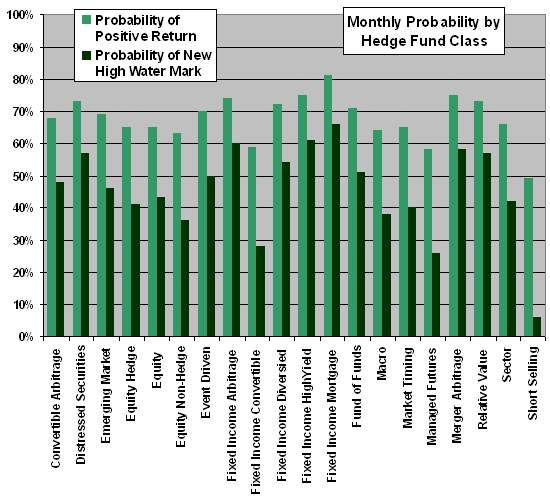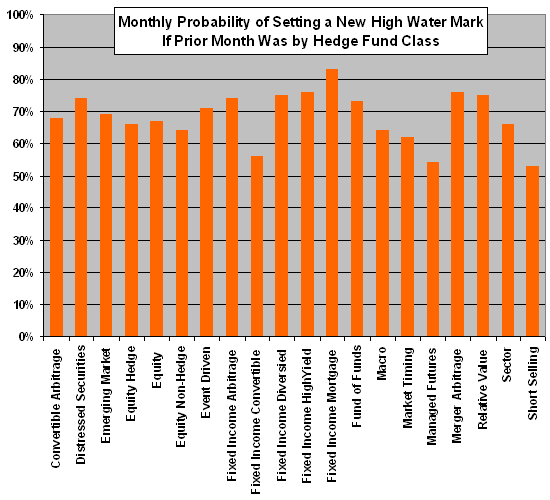What is the likelihood that a hedge fund will achieve a new high water mark in a given month? Are high water marks streaky? In their April 2010 paper entitled “Persistence Analysis of Hedge Fund Returns”, Serge Amvella, Iwan Meier and Nicolas Papageorgiou investigate performance relative to high water mark by hedge fund strategy class. (See the table “Hedge Fund Strategy Classifications” from Hedge Fund Research, Inc., the source of data for the study, for imperfectly matched descriptions of hedge fund classes.) Using monthly net-of-fee returns for 4,783 funds hedge funds across 20 strategy classes spanning January 1994 through December 2007, they find that:
- It is more challenging to increase high water marks than to generate positive returns, because typical negative returns are greater in magnitude than typical positive returns.
- The bigger the difference between probability of positive return and probability of increasing high water mark (see the first chart below), the greater the time to recover from losses. Across strategy classes, the average time to recover a capital loss ranges from 2.49 months to 7.15 months.
- Strategy classes with greater persistence in reaching new high water marks (see the second chart below) tend to recover from losses more quickly.
The following chart, constructed from data in the paper, compares the monthly probabilities of a positive return and a new high water mark for 20 hedge fund strategy classes over the entire sample period. The larger the difference for a class, the greater the typical recovery time after a drawdown. The subsamples of “Short Selling” and “Fixed Income Convertible” funds are very small.

The next chart, also constructed from data in the paper, shows the monthly probabilities of a new high water mark if the prior month was a new high water mark for 20 hedge fund strategy classes over the entire sample period. The higher the persistence in setting high water marks for a class, the shorter the typical time for recovering from a drawdown.

In summary, hedge fund investors may want to consider the probability and persistence of increasing high water mark in selecting hedge funds.